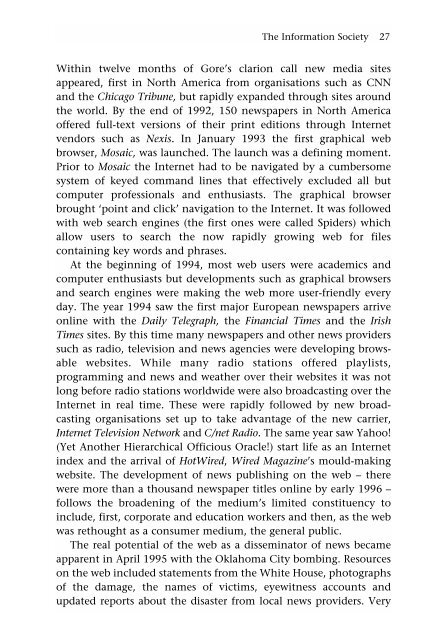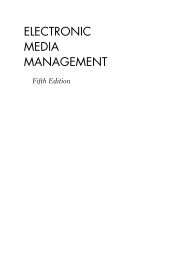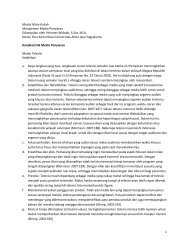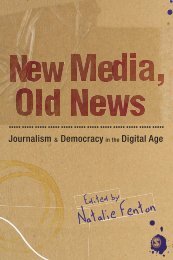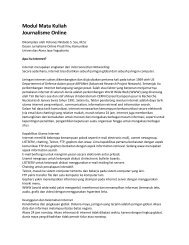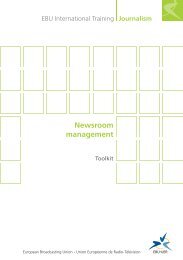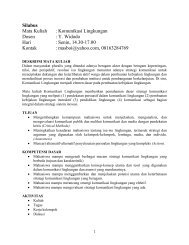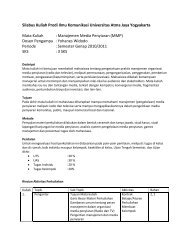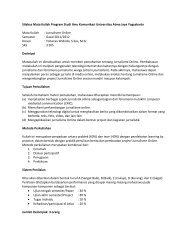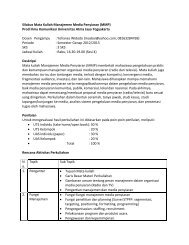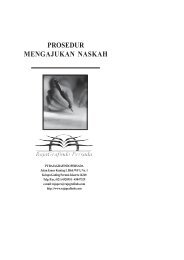Online Journalism - Ayo Menulis FISIP UAJY
Online Journalism - Ayo Menulis FISIP UAJY
Online Journalism - Ayo Menulis FISIP UAJY
Create successful ePaper yourself
Turn your PDF publications into a flip-book with our unique Google optimized e-Paper software.
The Information Society 27<br />
Within twelve months of Gore’s clarion call new media sites<br />
appeared, first in North America from organisations such as CNN<br />
and the Chicago Tribune, but rapidly expanded through sites around<br />
the world. By the end of 1992, 150 newspapers in North America<br />
offered full-text versions of their print editions through Internet<br />
vendors such as Nexis. In January 1993 the first graphical web<br />
browser, Mosaic, was launched. The launch was a defining moment.<br />
Prior to Mosaic the Internet had to be navigated by a cumbersome<br />
system of keyed command lines that effectively excluded all but<br />
computer professionals and enthusiasts. The graphical browser<br />
brought ‘point and click’ navigation to the Internet. It was followed<br />
with web search engines (the first ones were called Spiders) which<br />
allow users to search the now rapidly growing web for files<br />
containing key words and phrases.<br />
At the beginning of 1994, most web users were academics and<br />
computer enthusiasts but developments such as graphical browsers<br />
and search engines were making the web more user-friendly every<br />
day. The year 1994 saw the first major European newspapers arrive<br />
online with the Daily Telegraph, the Financial Times and the Irish<br />
Times sites. By this time many newspapers and other news providers<br />
such as radio, television and news agencies were developing browsable<br />
websites. While many radio stations offered playlists,<br />
programming and news and weather over their websites it was not<br />
long before radio stations worldwide were also broadcasting over the<br />
Internet in real time. These were rapidly followed by new broadcasting<br />
organisations set up to take advantage of the new carrier,<br />
Internet Television Network and C/net Radio. The same year saw Yahoo!<br />
(Yet Another Hierarchical Officious Oracle!) start life as an Internet<br />
index and the arrival of HotWired, Wired Magazine’s mould-making<br />
website. The development of news publishing on the web – there<br />
were more than a thousand newspaper titles online by early 1996 –<br />
follows the broadening of the medium’s limited constituency to<br />
include, first, corporate and education workers and then, as the web<br />
was rethought as a consumer medium, the general public.<br />
The real potential of the web as a disseminator of news became<br />
apparent in April 1995 with the Oklahoma City bombing. Resources<br />
on the web included statements from the White House, photographs<br />
of the damage, the names of victims, eyewitness accounts and<br />
updated reports about the disaster from local news providers. Very


